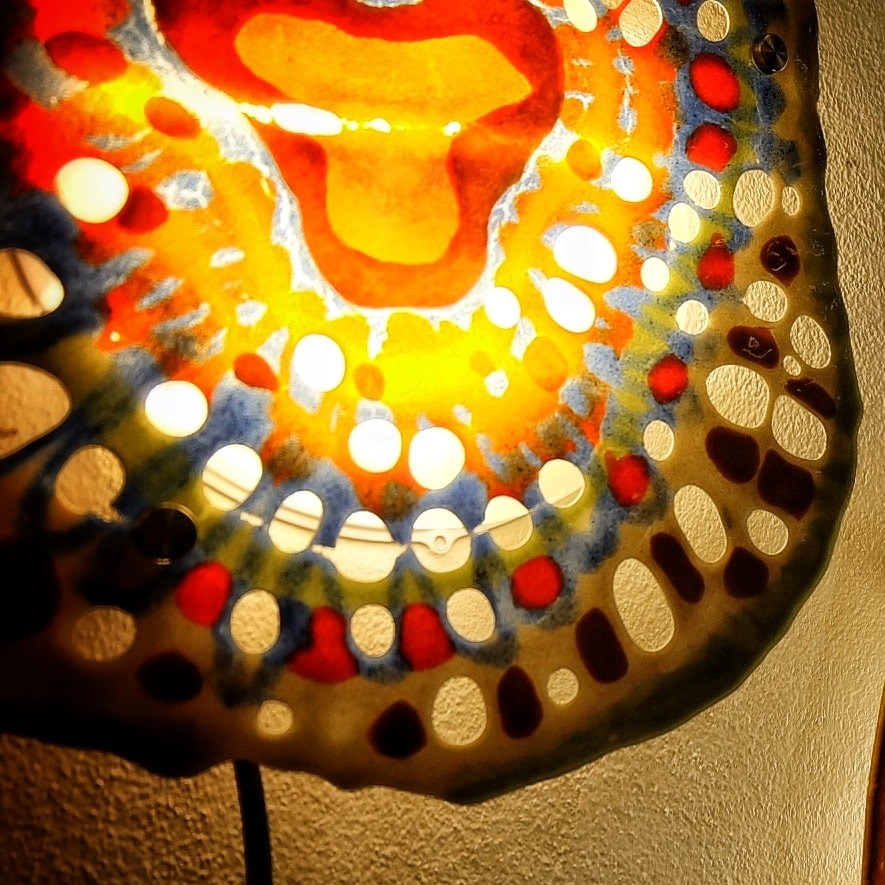Reusing Glass Waste from Glass-Blowing Factories to Create Glass Art
DOI:
https://doi.org/10.69598/sbjfa270423Keywords:
Warm Glass, Kiln-Formed Glass, Glass ArtAbstract
This research examines how glass waste from glass-blowing factories can be used in creative works. There are three objectives: 1. Study the methods of reusing glass waste in creative works. 2. Study the properties of glass waste and their appropriate usage. 3. Study methods in glass art to be used in education and commercial development. The research process involves surveying the factories and collecting samples. The thermal expansion coefficient and chemical composition are examined. Samples are tested to determine the appropriate temperature for creating works of art in the kiln-formed glass process. The results showed that glass from Thai factories had lower average silica content and higher sodium oxide content than general soda-lime glass. Glass from different factories has different chemical compositions. Therefore, they have different coefficients of thermal expansion, which is a limitation for reusing in the kiln-formed glass technique. Material preparation involves grinding, stretching a cullet into strips, and fusing glass into sheets, which are needed before creating forms of art. Different colored glass, which has been verified to have similar properties, can be fused together using various techniques. Colored glass fused in overlapping or layering can create a unique pattern or rhythm of color. Glass billets are recommended for casting. The transparency of glass changes the feeling of being heavy and dense in sculpture. Frit, or finely ground glass powder, can be used in the pâte de verre technique. It creates a crystal texture and flowing colors as a distinctive feature.
Downloads
References
เอกรัฐ มีชูวาศ, กนิษฐ์ ตะปะสา, ปริดา จำปีเรือง และ เทพีวรรณ จิตรวัชรโกมล. (2558). การพัฒนาสูตรแก้วสำหรับเตาหลอมชนิดไม่ต่อเนื่อง. วารสารวิทยาศาสตร์ประยุกต์ กรมวิทยาศาสตร์บริการ, 4(4), 29–35. https://doi.org/10.60136/bas.v4.2015.290
Cheng, S. C., Kao, M. S., & Hwang, J. J. (2024). Advanced Integration of Microwave Kiln Technology in Enhancing the Lost-Wax Glass Casting Process: A Study on Methodological Innovations and Practical Implications. Journal of Composites Science, 8(5), 168. https://doi.org/10.3390/jcs8050168
Cummings, K. (2007). Technique of Kiln-formed Glass. A&C Black.
Meechoovas, E., Tapasa, K., Jampeeruang, P., & Jitwatcharakomol, T. (2015). Glass batch development for pot furnace. Bulletin of Applied Sciences, 4(4), 29–35. https://doi.org/10.60136/bas.v4.2015.290 [in Thai]
Tait, H. (2004). Five Thousand Years of Glass. University of Pennsylvania Press.

Downloads
Published
How to Cite
Issue
Section
License
Copyright (c) 2024 © by the Author(s) & Silpa Bhirasri Journal of Fine Arts.

This work is licensed under a Creative Commons Attribution-NonCommercial-NoDerivatives 4.0 International License.
The journal's editorial team does not have to agree with the views and comments in the author's article, nor are they responsible for the comments.











